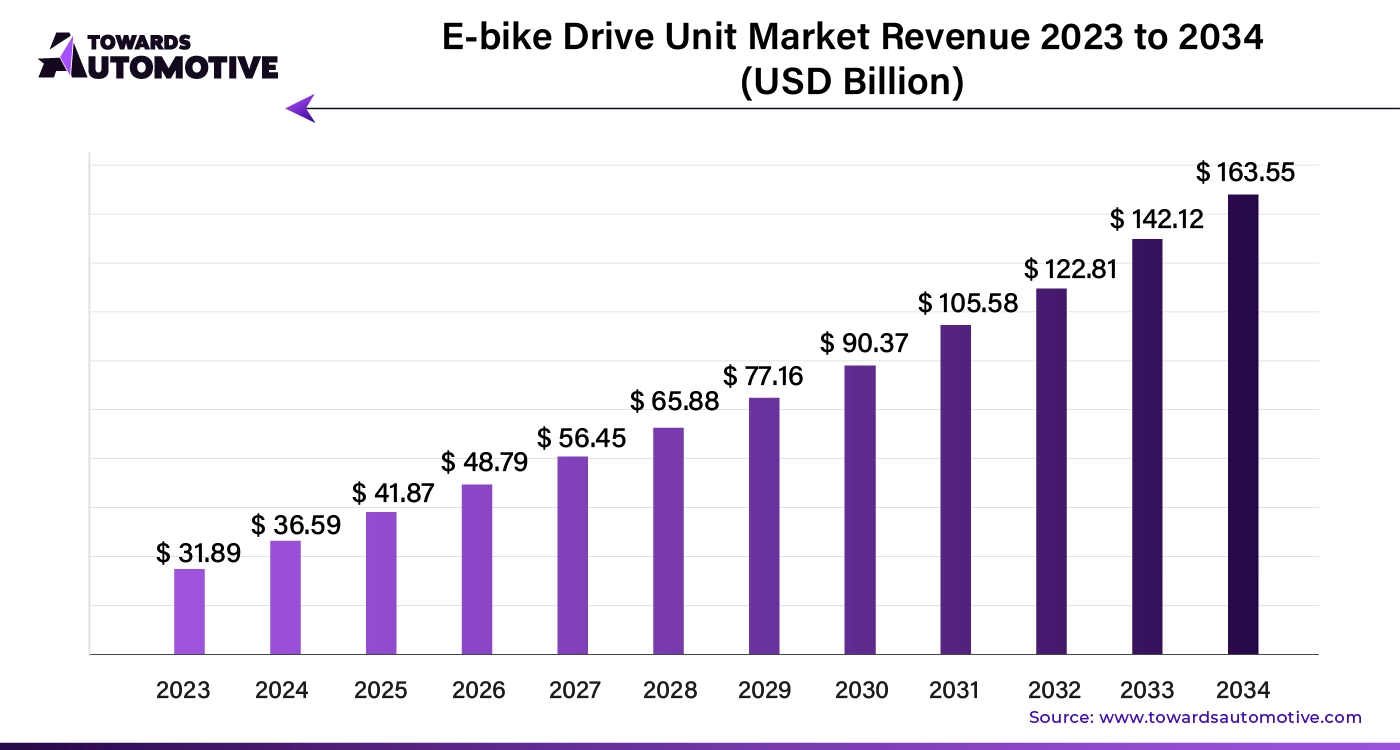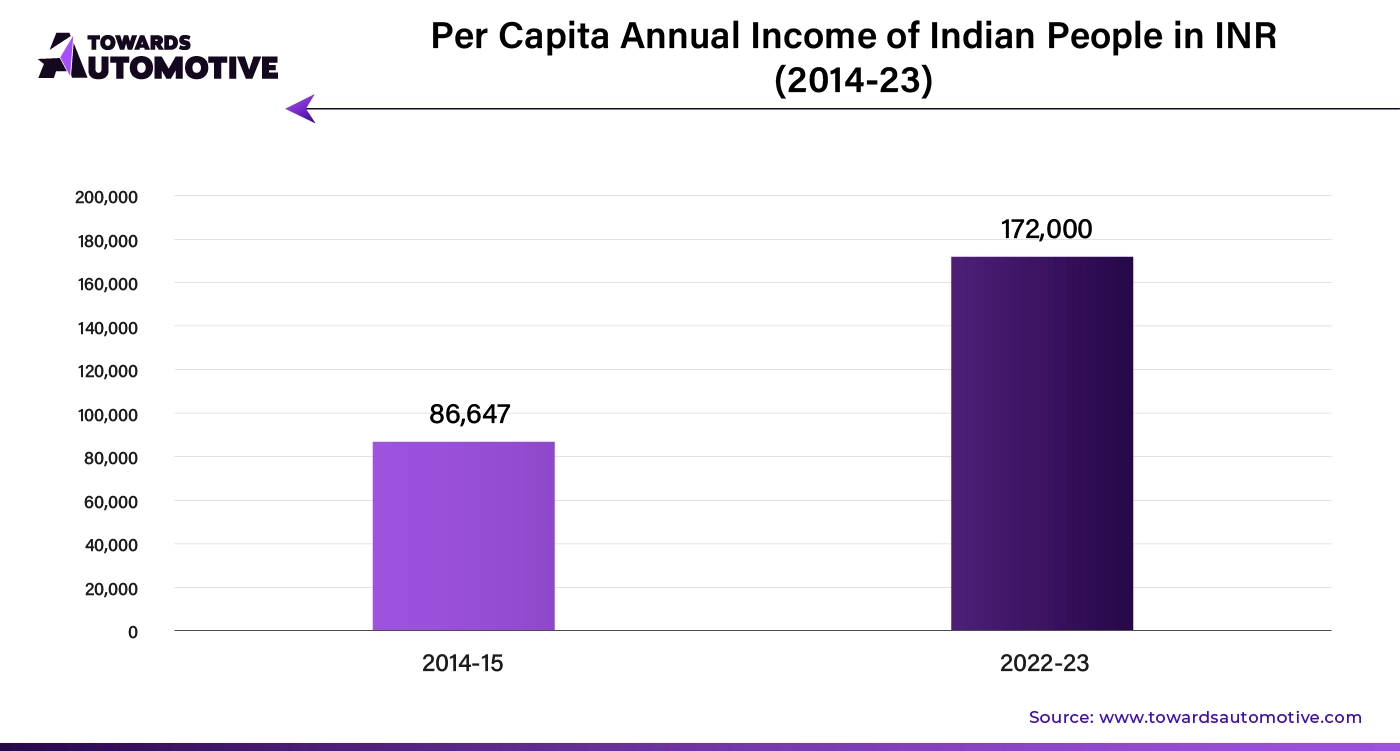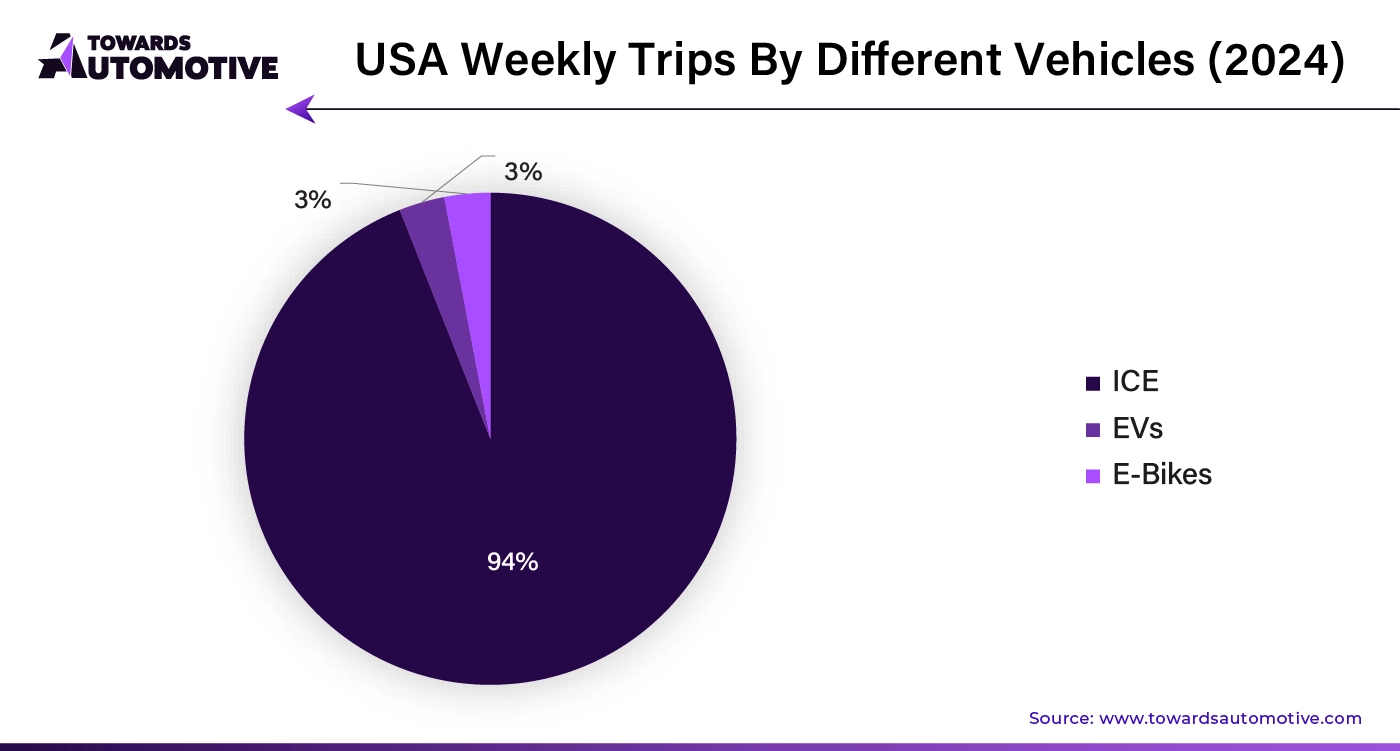April 2025
The global e-bike drive unit market size is calculated at USD 36.59 billion in 2024 and is expected to be worth USD163.55 billion by 2034, expanding at a CAGR of 14.65% from 2024 to 2034.

Unlock Infinite Advantages: Subscribe to Annual Membership
The e-bike drive unit market is experiencing rapid growth as electric bicycles become a popular and eco-friendly mode of transportation worldwide. A key component of e-bikes, the drive unit consists of the motor, battery, and control system, responsible for powering the bike and enhancing the rider’s experience. The market is driven by increasing demand for sustainable urban mobility solutions, rising fuel prices, and the desire for healthier commuting options. E-bike drive units offer efficient, reliable, and user-friendly electric propulsion, making them an attractive choice for a wide range of consumers, from daily commuters to recreational cyclists.
Technological advancements in drive units are further fueling market expansion. Innovations such as lightweight motors, improved energy efficiency, and enhanced battery performance are making e-bikes more accessible and appealing. These developments cater to diverse consumer needs, providing solutions for different terrains, riding styles, and distances. The growth of the e-bike drive unit market is also supported by government incentives and environmental initiatives that encourage the adoption of electric vehicles as part of the global effort to reduce carbon emissions.
In regions such as Asia Pacific, Europe, and North America, rising urbanization and increasing disposable incomes are driving demand for e-bikes. OEMs and component manufacturers are capitalizing on this trend by investing in research and development to create more advanced and cost-effective drive units. As consumers continue to prioritize sustainability and convenience, the e-bike drive unit market is expected to experience sustained growth, positioning itself as a crucial player in the future of personal transportation.
AI plays a transformative role in the e-bike drive unit market by enhancing the overall performance, efficiency, and user experience of electric bikes. One of AI’s primary contributions is optimizing energy management systems. AI algorithms analyze real-time data from various sensors, such as speed, battery levels, terrain, and rider behavior, to efficiently regulate power distribution. This ensures that the motor delivers the right amount of assistance based on the rider's needs and road conditions, improving battery efficiency and extending the range of e-bikes.
AI also plays a critical role in predictive maintenance for e-bike drive units. By continuously monitoring the performance of motors, batteries, and other components, AI systems can detect potential issues before they become serious problems. This reduces downtime and maintenance costs for e-bike users, increasing the reliability of the drive units. Manufacturers can also use this data to improve future models, leading to more durable and efficient e-bike drive units.
In addition, AI enhances the personalization of e-bike riding experiences. By learning the rider's habits and preferences, AI can automatically adjust settings, such as power output or riding mode, to suit individual needs. For instance, AI can switch between eco, sport, or comfort modes based on the rider’s patterns, creating a more intuitive and enjoyable riding experience.
AI-driven connectivity is another critical aspect, where e-bike systems are integrated with mobile apps or cloud platforms. This connectivity allows users to track performance, receive navigation assistance, or customize riding modes. It also enables manufacturers to offer over-the-air software updates, keeping e-bike drive units current without requiring physical upgrades.
The growing adoption of e-bikes is driving the growth of the e-bike drive unit market by increasing the demand for efficient, reliable, and high-performance drive systems. As more consumers embrace e-bikes for commuting, fitness, and recreational purposes, the need for advanced drive units that power these bikes continues to rise. The surge in e-bike popularity is fueled by the desire for eco-friendly transportation, rising fuel prices, and the convenience of electric assistance for longer rides or challenging terrains.
With the growing adoption of e-bikes, manufacturers are investing in innovative drive unit technologies to meet diverse consumer needs. The companies are developing efficient motors that offer greater power while remaining lightweight, along with batteries that deliver longer ranges and faster charging times. These advancements attract a broader audience, from urban commuters to outdoor enthusiasts, who seek customized e-bike solutions.
Additionally, the growing adoption of e-bikes is encouraging Original Equipment Manufacturers (OEMs) to expand their offerings and cater to different market segments. This includes developing drive units for city e-bikes, mountain e-bikes, and cargo e-bikes, each with specialized features. As more consumers turn to e-bikes, manufacturers are producing a wider variety of drive units, which in turn fuels the growth of the e-bike drive unit market.
The e-bike drive unit market faces restraints primarily due to high costs and limited battery life. The advanced technology and materials required for efficient motors and batteries drive up production costs, making e-bikes more expensive for consumers. Additionally, despite technological advancements, battery range and longevity remain challenges, especially for long-distance riders. Infrastructure limitations, such as insufficient charging stations, also hinder market growth. These factors collectively slow the broader adoption of e-bikes, restraining the market’s potential expansion.
Integration with smart connectivity is creating significant opportunities in the e-bike drive unit market by enhancing the overall user experience and adding value to electric bikes. E-bike drive units that are connected to smartphones and IoT platforms allow riders to monitor real-time data, such as battery levels, range, and motor performance, providing a more efficient and informed riding experience. This connectivity enables predictive maintenance, where the system alerts users to potential issues before they occur, reducing downtime and improving the longevity of theF
Smart connectivity also opens up opportunities for personalized riding experiences. Riders can customize their e-bike settings, such as power output, riding modes, and route planning, directly from their devices. This level of control attracts tech-savvy consumers who seek convenience and performance optimization. Additionally, manufacturers can offer over-the-air updates, ensuring that e-bike drive units stay up-to-date with the latest software improvements without requiring physical upgrades.
The hub motors segment dominated the market. Hub motors are significantly driving the growth of the e-bike drive unit market by offering several advantages that enhance the appeal and functionality of electric bikes. Positioned in the center of the wheel, hub motors streamline the design and performance of e-bikes, providing a more efficient and user-friendly solution compared to traditional mid-drive systems. Their integration simplifies the e-bike’s drivetrain, reducing maintenance needs and lowering overall costs for consumers. This convenience appeals to a broad audience, contributing to increased adoption rates.
Hub motors also boost the e-bike drive unit market by delivering robust performance and reliability. They offer consistent power delivery with minimal mechanical complexity, ensuring a smooth and enjoyable riding experience. Advanced hub motor designs, including direct-drive and geared variants, cater to various riding needs, from urban commuting to off-road adventures. These innovations enhance the versatility of e-bikes, making them suitable for diverse applications and expanding their market reach.
Furthermore, hub motors contribute to the growth of the e-bike drive unit market by supporting advancements in battery technology and energy efficiency. Many hub motor systems are optimized for energy management, extending battery life and improving overall efficiency. This synergy between hub motors and battery technology aligns with consumers' desires for longer-range and high-performance e-bikes.
The rising demand for e-bikes with improved ease of use, reliability, and performance drives manufacturers to focus on hub motor technology. As e-bike adoption increases globally, hub motors' role in enhancing e-bike functionality and affordability accelerates the market’s expansion, leading to continued innovation and growth in the e-bike drive unit sector.
The OEM segment held the largest share of the market. Original Equipment Manufacturers (OEMs) play a crucial role in driving the growth of the e-bike drive unit market by accelerating advancements in technology, design, and production efficiency. OEMs invest significantly in research and development to innovate and enhance e-bike drive units, leading to improved performance, durability, and cost-effectiveness. Their commitment to technological advancement ensures that e-bike drive units feature cutting-edge components and systems, such as high-efficiency motors and advanced battery management, which attract consumers and boost market demand.
Additionally, OEMs drive market growth through strategic partnerships and collaborations with component suppliers and technology providers. These alliances enable OEMs to integrate the latest technologies into their e-bike drive units, enhancing their appeal and functionality. By leveraging their extensive networks and expertise, OEMs can streamline production processes, reduce costs, and improve the overall quality of e-bike drive units, making them more accessible to a wider audience.
OEMs also contribute to the expansion of the e-bike drive unit market by addressing consumer needs and preferences. They actively respond to market trends and demands, developing drive units that cater to various riding styles and applications, from urban commuting to recreational cycling. This responsiveness to market needs helps OEMs create tailored solutions that appeal to diverse consumer segments, driving further adoption of e-bikes.
Moreover, OEMs play a significant role in promoting e-bike drive units through effective marketing and distribution strategies. Their established brands and global reach enable them to effectively market and distribute e-bike drive units, increasing their visibility and accessibility in various regions.
Asia Pacific dominated the E-bike drive unit market. Increasing disposable income, rising fuel prices, and technological advancements are driving the growth of the e-bike drive unit market in the Asia-Pacific region. As disposable income levels rise, more consumers can afford the initial investment in e-bikes and their advanced drive units. This higher purchasing power boosts demand for e-bikes, which offer a cost-effective and eco-friendly transportation alternative. Rising fuel prices further accelerate market growth by making traditional gasoline-powered vehicles more expensive to operate. As fuel costs increase, consumers seek economical options, and e-bikes provide a viable solution with lower operating expenses. Technological advancements also play a crucial role, as innovations in e-bike drive units improve motor efficiency, extend battery life, and reduce overall costs. These technological improvements enhance the performance and affordability of e-bikes, making them more attractive to consumers.

North America is expected to grow with a notable CAGR during the forecast period. Increasing urbanization, growing environmental awareness, and health and fitness trends are driving the growth of the e-bike drive unit market in North America. As cities expand and urban populations rise, the demand for efficient and sustainable transportation solutions increases. E-bikes offer a practical way to navigate congested urban areas, contributing to the surge in their popularity. At the same time, increased environmental awareness tends consumers to seek eco-friendly alternatives for reducing carbon footprint. E-bikes, with their low emissions and energy efficiency, align perfectly with these sustainability goals. Additionally, the growing emphasis on health and fitness encourages more people to adopt cycling as a regular activity. E-bikes provide an accessible option for individuals looking to incorporate exercise into their daily routines without the strain of traditional biking. These factors create a strong demand for e-bike drive units, as consumers in North America increasingly turn to e-bikes for their transportation and fitness needs. The convergence of these trends fuels the expansion of the e-bike drive unit market, driving innovation and adoption across the region.

By Product Type
By Application
By Region
April 2025
April 2025
April 2025
April 2025
We offer automotive expertise for market projections and customizable research, adaptable to diverse strategic approaches.
Contact Us